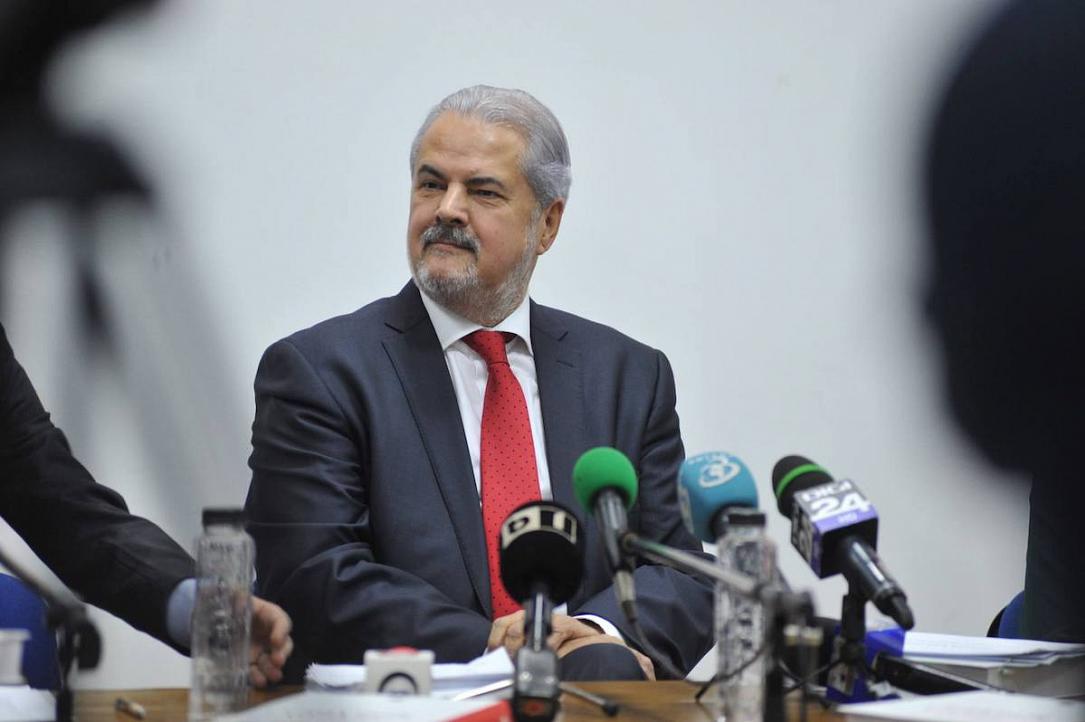Former PM withdraws artworks from Bucharest Art Museum exhibition after claims of forgery



Adrian Năstase, prime minister of Romania between 2000 and 2004, recently decided to withdraw several artworks from the Victor Bauer exhibition hosted by the National Museum of Art in Bucharest following accusations that some of them are forgeries.
Paintings from Năstase’s family collection were exhibited at the National Museum of Art, or MNAR, as part of the "Victor Brauner, Between the Oniric and the Occult” exhibition. Two art historians and critics, however, said that some of them were forgeries.
Art historian Adrian Buga posted a message titled "Public Protest" on Facebook in which he states that “it is known that works from the collections of Adrian Năstase, Andrei Năstase, Mihnea Năstase have major authenticity problems.”
“I recommend that the MNAR urgently conducts a counter-expertise carried out by international experts on Brauner's work, to confirm or refute the allegations regarding the authenticity issues of the works from the collections of Adrian Năstase, Andrei Năstase, Mihnea Năstase. I have always fought against the sale of fake art objects, dedicating my time, professional activity, and experience to discovering only original works, and an original work, unlike a fake one, has an uplifting effect on the viewer's spirit and greatly aids the national culture, and in the case of Brauner - international,” Buga said, cited by HotNews.
“If counter-expertises prove that works with authenticity issues were knowingly introduced in the exhibition, then a committee must be established in which the exhibition's curator and the general director of the MNAR must argue the reasons for introducing these works in the Brauner exhibition. A serious error, especially when refusing to collaborate with museum experts or international experts, is to be the curator of exhibitions for painters you do not know and do not master," stated the art historian.
Buga also asked for the public release of the expert assessments of the artworks from Adrian Năstase's family collections, the research of the museum's experts who dealt with the Brauner exhibition, and the studies related to the provenance of the artworks from the collections of Adrian Năstase, Andrei Năstase, and Mihnea Năstase.
Earlier, art historian Pavel Șușară also said that three exhibitions at the National Museum of Art, the one dedicated to Victor Brauner among them, included fakes.
"I do not know if it is just about unforgivable incompetence or, equally serious, a conscious maneuver to launder some works and manipulate the art market by ricochet. [...] A significant number of works, more than the fingers on one hand, are fakes to the point of ridicule. Such a distortion of a major cultural act, committed by a top public institution like MNAR, cannot be overlooked neither by the Ministry of Culture nor by the institutions that need to investigate such types of crimes," Șușară said on Facebook.
In response, Năstase accused the media covering the subject of “lynching” him and said that he decided to withdraw all the works that belong to him from the exhibition, according to Digi24.
Năstase said he "naively" believed he was respected in the art world due to his acts as prime minister. The former official made various mentions about the collection and said it is difficult for him to question Lena Constante, Harry Brauner's wife, Victor Brauner's brother. He also said that another watercolor had been given to him by Mihai Oroveanu, which he had received from poet Gellu Naum. He also referred to various expertise conducted both in Romania and in France for the works in his collection.
The National Museum of Art of Romania issued a statement in response to News.ro's request, saying that "it has not been aware so far of the existence of fakes in the exhibitions it has organized." The museum also rejected implications that it knowingly displayed forgeries and announced that it decided to close the Victor Brauner exhibition until February 7.
(Photo source: Adrian Nastase on Facebook)